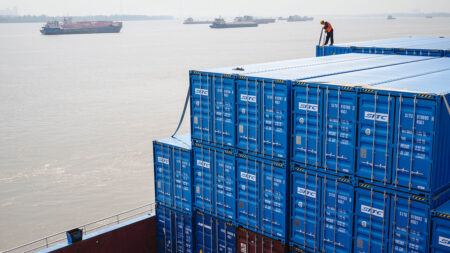In the tumultuous decade of the 1990s, Japan experienced one of the most severe financial crises in its modern history, culminating in what was referred to as the “triple yasu” loss. This term encapsulates the spiraling problems that plagued the Japanese economy during that period: a significant downturn in stock markets, an alarming rise in bond yields, and a weakening currency. Fast forward to current times, and the United States now finds itself grappling with this disconcerting trifecta of economic issues. The challenge is exacerbated further by geopolitical events and domestic policy decisions that complicate the financial landscape.
In 2019, under the leadership of President Donald Trump, there were hopes for economic stability as his administration implemented a temporary pause on tariffs, which momentarily alleviated market tensions. However, this brief period of optimism was fleeting; the effects of the triple yasu have re-emerged, casting a shadow over financial forecasts. Recently, the most disturbing trends have emerged from the bond and currency markets, indicating a worrying trajectory for the U.S. economy.
Since April 1st, financial indicators have painted a concerning picture for the dollar, as it depreciated by over 4% against a composite of major foreign currencies. This decline is indicative of a loss of confidence in the dollar among global investors, marking a shift in how the currency is perceived against its international counterparts. Such depreciation can lead to various implications for import costs and inflation rates, affecting both consumers and businesses alike.
Simultaneously, the yields on ten-year Treasury bonds have surged by an unsettling 0.3 percentage points. Rising bond yields typically signal apprehension in the economic environment, suggesting that investors may demand higher returns to compensate for perceived risks associated with holding government debt. This increase can also exert upward pressure on borrowing costs across various sectors of the economy, impacting everything from mortgages to corporate financing.
The combination of a depreciating dollar and rising bond yields creates a precarious economic scenario. If these trends continue, the potential for a broader financial crisis looms, reminiscent of the woes experienced in Japan over twenty years ago. There is an underlying tension that could lead to a tightening of financial conditions, pushing the Federal Reserve to reconsider its monetary policy stance. Market analysts are cautious, as any abrupt shifts in policy to counteract these emerging threats might have unintended consequences, potentially destabilizing markets further.
In the face of these challenges, the question remains how the U.S. administration and the Federal Reserve will respond. Policymakers are under considerable pressure to navigate this complex environment effectively. The delicate balance between fostering economic growth and curbing inflation becomes increasingly challenging as the elements of the triple yasu exert their influence on the U.S. economy.
Moreover, it is essential for investors to remain vigilant, as these economic indicators can signal shifts in market dynamics that require agile responses. As the financial world begins to brace for what could unfold as a protracted period of economic instability, lessons from the past may offer critical insights. Reinforcing the importance of proactive engagement with international markets and scrutinizing domestic fiscal measures will likely play a crucial role in seeking resilience against this resurgence of the triple yasu.
In conclusion, the financial landscape will continue to evolve; watching the interplay between currency, bond yields, and stock markets will be key to discerning the trajectory of the U.S. economy in the coming months. As with all market phenomena, the only certainty is change, and stakeholders must be prepared to adjust their strategies in response to these unfolding events. The specter of Japan’s financial turmoil serves as a sobering reminder of the complexities and interdependencies that define today’s global economy.









